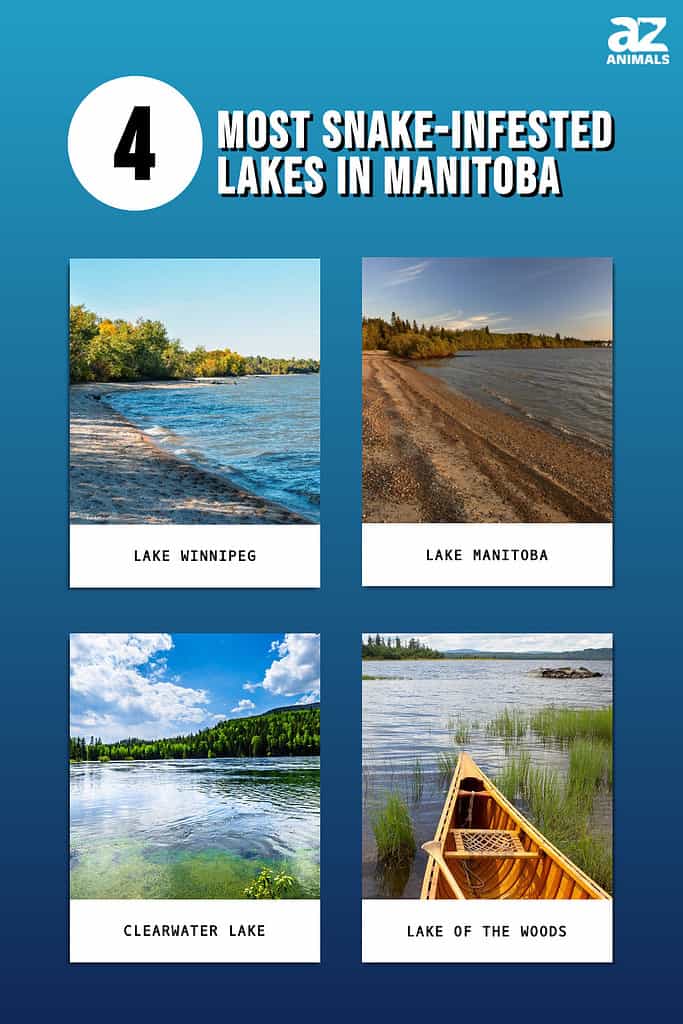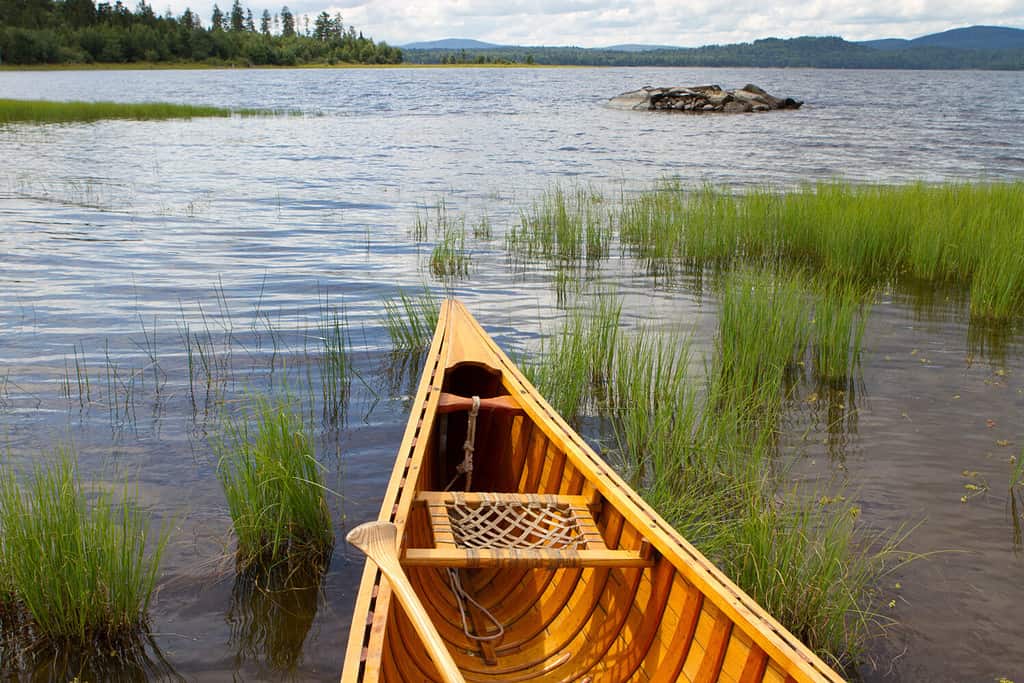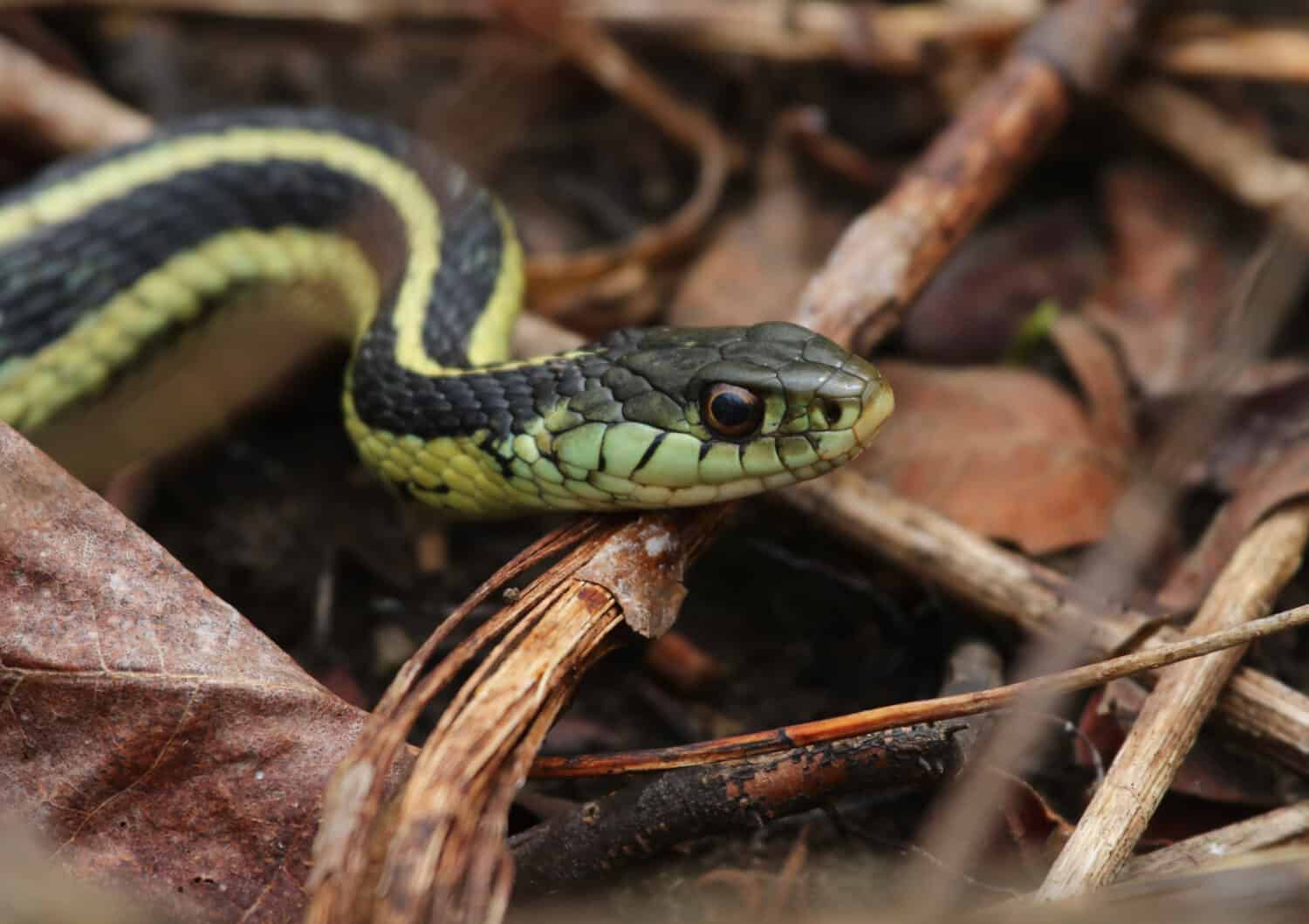Like many regions, Manitoba is home to many snakes. These slithery friends play a huge role in the ecosystem, as they control the rodent and insect population. While you may see snakes literally anywhere, some species prefer to hang around water, leading to several snake-infested lakes in Manitoba.
As you might imagine, water snakes live in lakes. However, there are many other species that live around lakes, and you’re actually much more likely to see these than a true water snake. Garter snakes are one of the most common sights around lakes in Manitoba. Luckily, these small snakes are completely harmless.

Here is a list of lakes that are known for their snake population:
1. Lake Winnipeg

Lake Winnipeg is the third-largest freshwater lake that is only in Canada.
©lastdjedai/Shutterstock.com
This is a very large lake, so it also has a very large snake population. This doesn’t necessarily mean you’re more likely to see a snake. It covers about 9,465 square miles, with a length of around 258 miles. It’s very vast.
This lake is located in southeastern Manitoba, and it is bordered by several communities, including Winnipeg (which is the town this lake is named after).
Lake Winnipeg is part of the Nelson River drainage basin, and it receives water from various rivers and streams, including the Winnipeg, Red, and Saskatchewan Rivers. As you probably know, it is freshwater.
Because this lake is so vast, it is home to many types of aquatic life, including several fish species, invertebrates, and plants. Garter snakes, which we mentioned earlier, are one of the few snake species found in the areas around this lake.
This lake is popular for many recreational activities, including fishing, boating, and swimming.
2. Lake Manitoba

You may find garter snakes in Lake Manitoba.
©Pictureguy/Shutterstock.com
You can’t really talk about “lakes in Manitoba” without discussing Lake Manitoba. This lake is located in the southern part of the Canadian province of Manitoba. It is situated in to the west of Lake Winnipeg, which we have already discussed.
This lake is rather large, though not nearly as big as Lake Winnipeg. It covered 1,783 square miles with a maximum width of around 28 miles.
It is known for its irregular shoreline that has many bays, inlets, and peninsulas. The diverse shoreline provides an important feeding ground and home for many different species. Birds like waterfowl and songbirds are fairly common in this lake. You’ll also see fish like walleye and northern pike.
Lake Manitoba is a popular destination for outdoor enthusiasts. Fishing is a major recreational activity, as this lake is home to many fish species.
3. Clearwater Lake

This lake is also home to mostly garter snakes.
©Harry Beugelink/Shutterstock.com
Clearwater Lake has a sizable snake population, though the most common one is the garter snake. It’s located within a boreal forest region, which makes it suitable for a variety of fish species.
This lake is relatively large and deep. It covers around 32,520 acres. Despite its popularity, the lake is known for its clear waters, which make it an attractive destination for tourists. It’s a popular area for fishing, kayaking, and hiking. Anglers target species like lake trout, northern pike, walleye, and whitefish.
Clearwater Lake is known for its natural beauty. It features several rugged shorelines and serene landscapes, so it sees a sizeable number of visitors each year despite the snakes.
4. Lake of the Woods

Canoeing is a popular recreational activity in Manitoba.
©Kate Sfeir/Shutterstock.com
Lake of the Woods is a large, internationally shared freshwater lake located on the border between Canada and the U.S. This lake covers 1,700 square miles. It’s pretty big, though it isn’t the largest in the region.
One defining feature of this lake is its vast number of islands. There are tons, though most are quite small. The character of this lake sets it apart from the others around it and allows it to provide some unique recreational activities.
This lake is very popular for fishing. It offers diverse habitats that many types of fish thrive in, including walleye, northern pike, and smallmouth bass. In addition to fish, the lake is also home to snakes, waterfowl, bald eagles, ospreys, and other animals.
What Snakes Are Found Around Lakes in Manitoba?
The most common snake species in Manitoba are garter snakes. You can find several different kinds of garter snakes in this region, including the common garter snake and the plains garter snake. This snake species is completely harmless to humans, and they tend to stay hitten most of the time.
These snakes often thrive in various habitats, including areas around lakes. However, they are not technically water snakes. Therefore, they tend to hang around the lake but not in it.
Dangerous, venomous snakes do not exist in this province.
Summary of the Most Snake-Infested Lakes in Manitoba
| Number | Lake |
|---|---|
| 1 | Lake Winnipeg |
| 2 | Lake Manitoba |
| 3 | Clearwater Lake |
| 4 | Lake of the Woods |
Thank you for reading! Have some feedback for us? Contact the AZ Animals editorial team.








